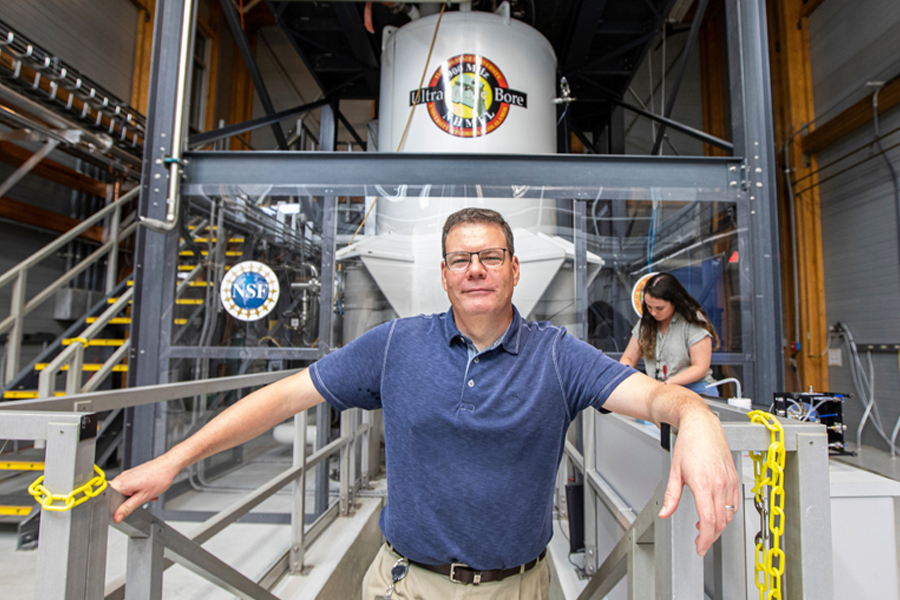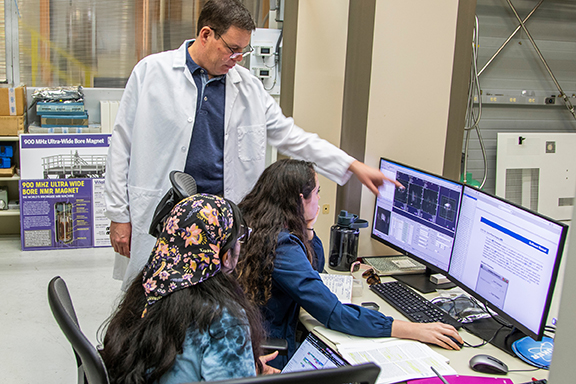
When patients are treated for strokes and other neurological disorders, understanding what is happening inside the nervous system is a crucial part of treatment. Doctors rely on imaging tools such as magnetic resonance imaging (MRI) to peer inside the body and see if interventions are helping.
A Florida State University research team has found that a combination of two MRI techniques can provide early answers on the effectiveness of stem cell therapies for treating strokes, which could help physicians quickly know if a treatment is working or if they should change their strategy. Their work was published in the journal Translational Stroke Research.
“With strokes, the sooner that you can salvage tissue that might be at risk, because it’s been starved from oxygen and glucose, the sooner you can avoid some of that inflammatory response and help the tissue recover,” said Sam Grant, a professor at the FAMU-FSU College of Engineering and faculty researcher at the National High Magnetic Field Laboratory.

The researchers examined rat brains that had suffered a stroke and been injected with stem cells, specifically adult mesenchymal stem cells, which come from a variety of sources in the human body and are the focus of treatments for neurological diseases.
Some of the specimens had been treated with healthy cells, which reduced inflammation, restored ionic and metabolic imbalances and assisted recovery. Others had been treated with a compromised cell line. Those cells were less likely to proliferate and induced inflammation instead of causing the desired anti-inflammatory response.
The researchers examined the samples with a combination of two imaging techniques: one that detects the distribution of sodium and another that detects protons, which they used to observe the distribution of the organic acid lactate. By combining these techniques, the researchers could determine which samples had received healthy cells and which had received compromised cells in less than 24 hours. Within three days, the differences were even clearer.
Using conventional testing, it would have taken three weeks before the healthy and compromised cell lines were clearly distinguishable, Grant said.
“There are things that could be hiding effectively in the cells that only really make themselves known with these types of tests,” he said. “What’s striking is that with the MRI studies we did, we were able to detect any deficits shortly after implantation.”
That sort of quick response is important for treating stroke patients. About 795,000 people suffer a stroke in the United States each year, making it a leading cause of death and disability in the country, according to the Centers for Disease Control and Prevention. Most strokes occur when the blood supply to the brain is blocked.
This work focused on stem cell therapies, but further research could expand the use of this imaging to other therapies. In the future, Grant said, physicians could potentially use these techniques to identify whether a particular therapy is providing a benefit in early treatment.
Paper co-authors included graduate students Shannon Helsper and Andrew Bagdasarian, postdoctoral researcher Xuegang Yuan, and former undergraduate researcher Jacob Athey, as well as FAMU-FSU College of Engineering Associate Professor Yan Li and Cesario Borlongan, director of the Center of Excellence for Aging & Brain Repair at University of South Florida.
This work was supported by the National Institutes of Health and the National Institute of Neurological Disorders and Stroke.




